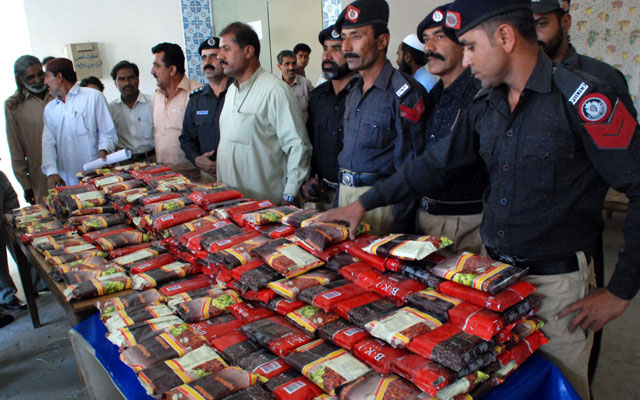Asia’s Persistent Drug Problem Could Hit Home
Olivia Enos /
Drug wars have plagued Asia for decades, and the drug problem continues to stem the tide of economic growth and development in the region. A recent study released by the United Nations noted that Afghanistan, the number one opium producer in the world, may soon be producing over 90 percent of the world’s opium supply, while Burma remains the number two supplier. Without serious reforms to the drug control strategy, Asia will continue to be a primary source of illicit drugs.
The State Department designated Afghanistan, Burma, India, Laos, and Pakistan as drug majors, meaning that five of the 22 major drug producers or transit countries in the world are from Asia. Two of the largest drug-producing regions—the Golden Triangle and the Golden Crescent—are also located in Asia.
Countries in this region have a unique, interconnected market that fuels the worldwide drug trade and impacts us right here at home. Many people in these troubled regions are unable to pass up the allure of the over $320 billion in vast profits associated with the worldwide drug trade. In Burma, the poorest country in Southeast Asia, an estimated 300,000 households have opted for farming illicit crops because of the greater profit associated with drug farming.
The drug trade has serious negative consequences for communities and families in Asia. For example, in India, a major transit country for illicit drugs, some villages face a severe shortage of males due to drug addiction. Drug overdoses have left many families to be raised by a single parent, leaving children without fathers, and women as the primary breadwinner of the family.
In Afghanistan, many underage girls are traded as goods to be married off to foreign men without their consent in exchange for drugs. Other girls end up as child prostitutes, or skirt the system by trafficking drugs themselves. Since there are an estimated 1.5 million adults addicted to drugs in Afghanistan, many children have now become addicted, making the drug problem a generational epidemic.
The drug trade in Asia poses a threat to American national security as well, particularly as we prepare for the post-2014 draw down in Afghanistan. In countries like Pakistan and Afghanistan, much of the drug profits go straight into the pockets of terrorists or the Taliban. Since drug trafficking usually accompanies instability, Afghanistan is particularly vulnerable to an increase in drug trafficking once the U.S. exits the country.
If the drug trade continues, it will have a devastating impact on the social structure and the economic and political development of Asia and will continue to threaten American national security. The U.S. needs to develop a comprehensive strategy for dealing with this multi-faceted, stubborn threat. Analysts at The Heritage Foundation have inaugurated an intensive effort to better understand the problem and devise effective, principled solutions, which will be released in a forthcoming paper.

